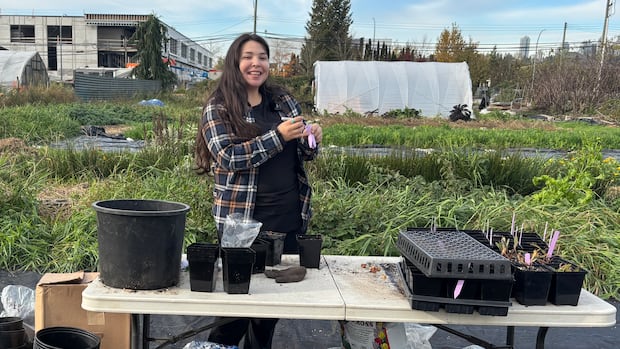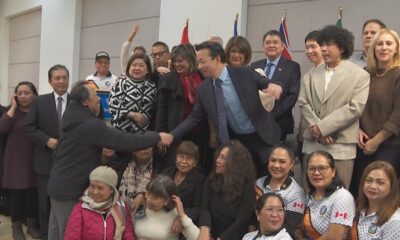Top Stories
Urgent Call to Indigenize B.C. Plant Spaces This Fall

UPDATE: A significant movement to Indigenize plant spaces in British Columbia is gaining momentum as horticulturist Shayla Chalifoux emphasizes the importance of planting native species this fall. Chalifoux, a member of the Sekw’el’was community (Cayoose Creek Band), highlights this season as an ideal time for planting, as the soil remains warm and the rain aids in plant establishment.
Chalifoux, founder of Shaylish Plants, is advocating for urban landscaping that incorporates native plants, challenging the traditional view that spring is the primary planting season. “Many native plants, such as sweetgrass and camas bulbs, thrive when planted in the fall,” she stated. Camas bulbs, a traditional food source for several First Nations, can be likened to sweet potatoes in terms of nutritional value.
The urgency of this initiative is underscored by the biodiversity crisis facing urban landscapes in B.C.. Despite possessing over 2,500 native vascular plant species, the use of these plants in urban environments remains limited. Chalifoux expressed concern about the horticultural industry’s focus on aesthetic appeal over ecological significance. “In the horticulturist industry I’m in, I didn’t see a lot of native plants being prioritized,” she noted.
Chalifoux urges individuals to take action, suggesting that planting native species can significantly benefit local ecosystems. “The land is hurting. One way we can help the land is by incorporating native plants,” she explained. Native plants support local wildlife, including native butterflies that rely exclusively on specific plants for survival.
In an official statement, the City of Vancouver acknowledged the efforts to increase native plants in urban spaces. The Vancouver Board of Parks and Recreation is actively working to incorporate native species into city landscaping, guided by consultations with local First Nations. A prime example includes the addition of Pacific yew to the Stanley Park Restoration initiative, reflecting community input.
As the planting season approaches, Chalifoux is set to host workshops and speaking engagements to educate the public about the benefits of native plants. “We need to change the narrative around urban gardening,” she emphasized. The urgency of this initiative cannot be overstated, as sustainable practices are increasingly essential for the health of urban ecosystems.
Residents are encouraged to support Chalifoux’s mission by planting native species in their gardens and balconies. “Why would you plant a native plant here? Because host nations have a relationship with that, or this specific plant is a host plant for a larva,” she explained, highlighting the interconnectedness of local flora and fauna.
As this movement gains traction, the importance of education and policy change remains critical. With ongoing discussions around urban planning and biodiversity, the call to action is clear: prioritize native plants to foster a healthier environment in British Columbia.
Stay tuned for further updates on this vital initiative as it develops.
-

 Politics1 week ago
Politics1 week agoSecwepemc First Nation Seeks Aboriginal Title Over Kamloops Area
-

 World4 months ago
World4 months agoScientists Unearth Ancient Antarctic Ice to Unlock Climate Secrets
-

 Entertainment4 months ago
Entertainment4 months agoTrump and McCormick to Announce $70 Billion Energy Investments
-

 Lifestyle4 months ago
Lifestyle4 months agoTransLink Launches Food Truck Program to Boost Revenue in Vancouver
-

 Science4 months ago
Science4 months agoFour Astronauts Return to Earth After International Space Station Mission
-

 Technology3 months ago
Technology3 months agoApple Notes Enhances Functionality with Markdown Support in macOS 26
-

 Top Stories1 month ago
Top Stories1 month agoUrgent Update: Fatal Crash on Highway 99 Claims Life of Pitt Meadows Man
-

 Sports4 months ago
Sports4 months agoSearch Underway for Missing Hunter Amid Hokkaido Bear Emergency
-

 Politics3 months ago
Politics3 months agoUkrainian Tennis Star Elina Svitolina Faces Death Threats Online
-

 Politics4 months ago
Politics4 months agoCarney Engages First Nations Leaders at Development Law Summit
-

 Technology4 months ago
Technology4 months agoFrosthaven Launches Early Access on July 31, 2025
-

 Top Stories3 weeks ago
Top Stories3 weeks agoFamily Remembers Beverley Rowbotham 25 Years After Murder





















